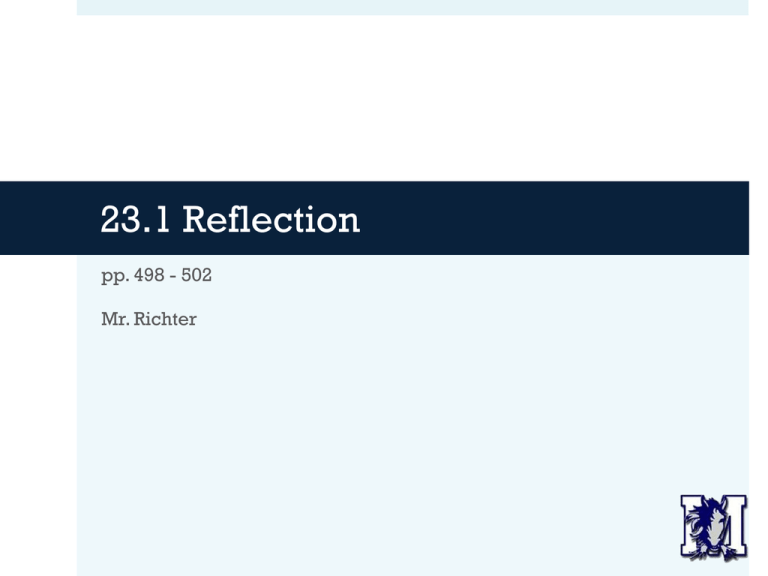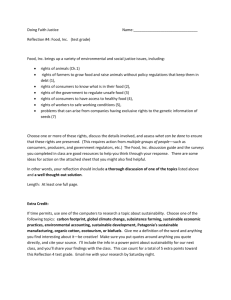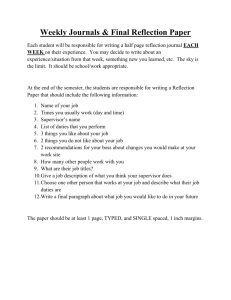23.1 Reflection
advertisement

23.1 Reflection pp. 498 - 502 Mr. Richter Agenda Warm-Up Review HW Notes Optics and Mirrors Reflection The Law of Reflection Objectives: We Will Be Able To… Describe the behavior of images in mirrors. Define reflection, and distinguish between types of reflection. Understand the law of reflection. Warm-Up: Why does a mirror seem to switch or flip images from left to right, but doesn’t switch images upside down? Optics and Mirrors Optics and Mirrors Optics is the study of light. An optical device is something that purposefully changes the direction of light. Mirrors are optical devices that reflect light. A good mirror reflects about 90% of the light that hits it. Optics and Mirrors Flat mirrors reflect an image that is identical to the object. Curved mirrors can distort an image, and make it larger or smaller. Reflection Reflection (in Flat Mirrors) In flat mirrors, the image appears to be the same distance from the mirror as the object. Mirrors reverse front to back, not left to right. Reflection If a surface is smooth, all of the reflected light heads in the same direction. This is called specular reflection. If a surface is rough, the reflected light heads in many different directions. This is called diffuse reflection. We see most objects by diffuse reflection. Reflection Reflection Sometimes reflection can be both specular and diffuse. The Law of Reflection and Ray Diagrams Ray Diagrams The incoming ray of light is called the incident ray. The reflected ray of light is called… the reflected ray. The line that is perpendicular to the mirror (or any surface) is called the normal line. The Law of Reflection The law of reflection states that the angle of incidence (incoming light) is equal to the angle of reflection (outgoing light). Angles are always measured from the normal line. Wrap-Up: Did we meet our objectives? Describe the behavior of images in mirrors. Define reflection, and distinguish between types of reflection. Understand the law of reflection. Homework p. 502 #3, 4 p. 519 #1-4





